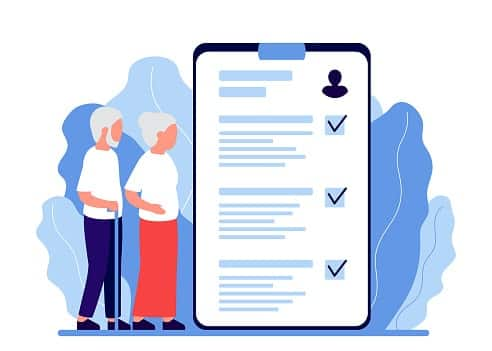Most expensive and least expensive states for individual insurance
At $477 a month for a benchmark plan, 2024 ACA plan costs are up $21 on average from the 2023 average of $456.
Vermont remains the most expensive state for a benchmark plan in 2024. Alaska climbed from fourth place to second place for 2024 at $889 a year, while last year's second most expensive state, West Virginia, dropped down a place to third.
5 most expensive states for ACA plans
- Vermont - $841
- Alaska - $889
- West Virginia - $847
- Wyoming - $821
- New York - $736
5 cheapest states for ACA plans
- New Hampshire - $335
- Minnesota - $343
- Maryland - $346
- Virginia - $371
- Michigan - $381
Here are the average monthly premiums for the ACA benchmark plans in 2024 by state compared to 2023.
Average monthly premiums
| State | 2023 | 2024 |
|---|---|---|
| Alabama | $567 | $564 |
| Alaska | $762 | $889 |
| Arizona | $410 | $403 |
| Arkansas | $416 | $424 |
| California | $432 | $469 |
| Colorado | $380 | $451 |
| Connecticut | $627 | $661 |
| Delaware | $549 | $533 |
| District of Columbia | $428 | $532 |
| Florida | $471 | $489 |
| Georgia | $413 | $463 |
| Hawaii | $469 | $468 |
| Idaho | $425 | $417 |
| Illinois | $453 | $473 |
| Indiana | $397 | $399 |
| Iowa | $484 | $451 |
| Kansas | $471 | $486 |
| Kentucky | $422 | $431 |
| Louisiana | $565 | $563 |
| Maine | $457 | $515 |
| Maryland | $336 | $346 |
| Massachusetts | $417 | $419 |
| Michigan | $362 | $381 |
| Minnesota | $335 | $343 |
| Mississippi | $461 | $485 |
| Missouri | $473 | $501 |
| Montana | $477 | $504 |
| Nebraska | $550 | $570 |
| Nevada | $386 | $387 |
| New Hampshire | $323 | $335 |
| New Jersey | $441 | $461 |
| New Mexico | $445 | $471 |
| New York | $627 | $736 |
| North Carolina | $512 | $495 |
| North Dakota | $475 | $486 |
| Ohio | $413 | $435 |
| Oklahoma | $510 | $508 |
| Oregon | $462 | $488 |
| Pennsylvania | $433 | $445 |
| Rhode Island | $379 | $400 |
| South Carolina | $496 | $492 |
| South Dakota | $626 | $616 |
| Tennessee | $473 | $501 |
| Texas | $461 | $475 |
| Utah | $471 | $507 |
| Vermont | $841 | $950 |
| Virginia | $371 | $371 |
| Washington | $395 | $415 |
| West Virginia | $824 | $847 |
| Wisconsin | $456 | $476 |
| Wyoming | $802 | $821 |
What contributes to premiums?
Many factors go into average premiums. Competition and the health of a state’s people are two factors.
More competition helps bring down rates as insurers battle for customers. Plus, spreading members across more insurance companies means they’re also balancing the sickest members. Not having to cover more high-cost members allows insurers to keep down rates.
Overall inflation and fallout from the pandemic continue to affect the cost of health insurance, and with the end of pandemic-era rules regarding Medicaid, more people will be seeking coverage in the marketplace.
Health insurance finder tool




COBRA
Learn more about COBRA

How much is your annual household income?
How many members are in your household?

Medicare
Medicare costs vary depending on which option you choose.
Learn more about Medicare costs.


Medicaid


Parent's employer-sponsored health insurance

Spouse's employer-sponsored health insurance

- PPO
- HMO
- HDHP
- EPO
Employer-sponsored health insurance

- PPO
- HMO
- HDHP
- EPO
- PPO
- HMO
- HDHP
- EPO
Preferred-provider Organization (PPOs)
- Pay higher premiums with a lower deductible
- You have access to more providers, but pay much more for health insurance
- You don't want to choose a primary care physician
- You don't want to get a referral
- You want the ability to get out-of-network care
Find out more about the differences between plans
Health maintenance organization (HMO)
- Pay higher premiums with a lower deductible
- Restricted network of providers with lower premiums
- You want to choose a primary care physician
- You don't mind getting a referral
- You don't care about the ability to get out-of-network care
Find out more about the differences between plans
High-deductible health plans (HDHPs)
- Pay lower premiums with a higher deductible
Find out more about the differences between plans
Exclusive provider organization (EPO)
- Restricted network of providers with lower premiums
- You don't want to choose a primary care physician
- You don't want to get a referral
- You don't care about the ability to get out-of-network care
Find out more about the differences between plans


Learn more about individual insurance plans

Health insurance options beyond the health insurance exchanges
For many people, ACA marketplace plans are the easiest and cheapest way to get coverage, especially those that qualify for subsidies. However, if you qualify for other health plans, there might be a cheaper option, and it might even offer better coverage.
Your employer or your spouse’s employer
Employer-sponsored health insurance remains the most common way Americans get coverage. It’s usually cheaper than getting individual insurance or family coverage from the exchanges.
If both you and your spouse have insurance options, compare each plan to see which one is best for you. Make sure to check that your doctors and physicians are part of the network.
Also, remember that children can stay on their parents’ health insurance until the age of 26, so you’ll want to take into account their health needs when making a decision.
A government health insurance plan
If you qualify, public plans like Medicare, Medicaid and the Children's Health Insurance Program (CHIP) are more inexpensive ways to get covered.
Medicare is usually for people 65 and older. It’s also for people with a disability or with end-stage renal disease.
Medicaid is another option for many Americans. The ACA allowed states to expand Medicaid up to 138% of the federal poverty level.
A direct individual or family plan from a health insurer
Rather than buy a plan through the ACA exchanges, you can also sign up for a health plan from the regular individual insurance market. Some insurers that don’t offer plans in the exchanges provide coverage through individual insurance, so you have that option, too.
These plans are usually significantly more expensive than employer-sponsored coverage, but they’re an option to get full coverage if you’re not eligible for an employer-sponsored plan.
Source:
Kaiser Family Foundation. "Marketplace Average Benchmark Premiums." Accessed January 2024.






